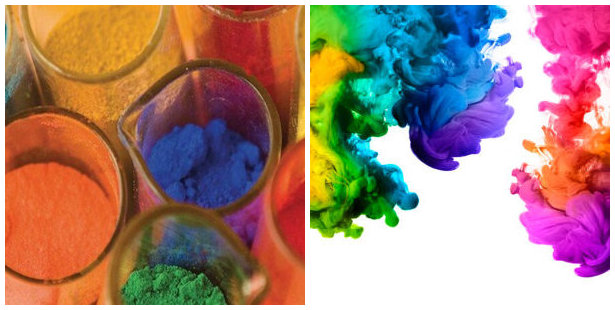Although both organic pigments and dyes are organic compounds and their chemical structures are extremely similar, there are significant differences in their applications and properties.
Similarities between organic pigments and dyes
Both organic pigments and dyes consist of coloured organic compounds, some of which can even be used as both pigments and dyes. This gives them certain chemical properties in common, such as colour behaviour and the properties of certain chemical reactions.
Differences between organic pigments and dyes
Fields of application:
Dyes are mainly used for textile dyeing, as they are able to bind to the fibre molecules and produce a strong colouring effect. In contrast, organic pigments are mainly used for colouring non-textiles, such as paints, inks, coatings, plastics and rubber. Since organic pigments cannot bind directly to fibre molecules, they need to be attached to the surface of an object by means of a resin or other adhesive.

Solubility:
Dyes need to be dissolved in the medium in which they are used, for example, disperse dyes will dissolve in water before they are dyed onto the surface of the fibre. Organic pigments, on the other hand, do not dissolve in the medium and remain in a crystalline state, distributed directly as solid particles in the coating or substrate. Therefore, the particle size and crystal state of organic pigments are critical to their performance, whereas the crystal state of dyes does not affect their dyeing effect.
Colour Performance:
Since dyes are soluble in the medium in which they are used, the colour of the dye itself does not fully represent its actual colour on the textile. As organic pigment always exists in solid particle state, its colour is basically the colour it represents in the substrate. The crystalline state of the pigment therefore determines its final effect in use.
This difference makes dyes suitable for dyeing fibres, whereas pigments are suitable for colouring various non-textile surfaces. It also reflects the complementary roles of the two in different fields.
Although pigments and dyes are different concepts, they can be used interchangeably in certain specific situations. For example, certain anthraquinone-based reducing dyes, although insoluble dyes in their original state, can be used in pigment applications after special treatment. These pigmented dyes are often referred to as ‘pigmented dyes’ or ‘dye pigments’, which have the properties of dyes but can also be useful in pigment applications.





